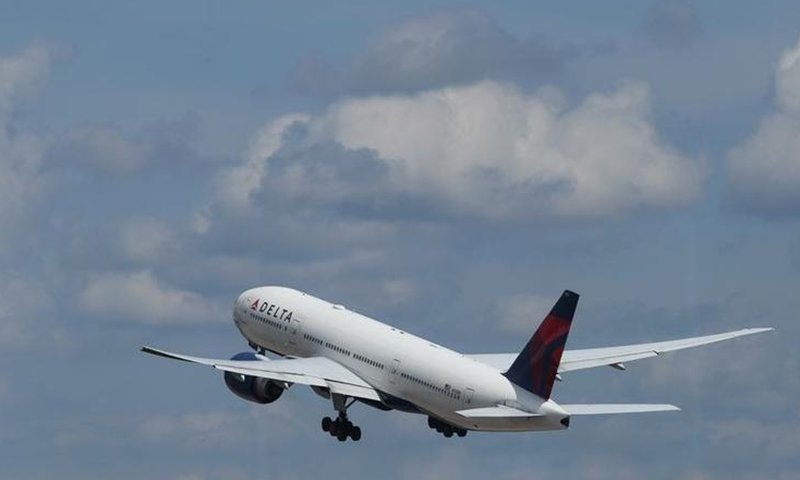The Biden administration’s recent decision to double the number of weekly flights between China and the US marks an important progression in bilateral aviation cooperation, despite ongoing geopolitical tensions between the world’s two largest economies. This move, driven by significant demand, aims to facilitate the recovery of the direct passenger flight market to levels observed before the pandemic.
The US Transportation Department (DOT) announced that starting September 1, each country would be permitted an additional six weekly round-trip flights, increasing the existing count of 12. This number is projected to rise to 24 per week from October 29, effectively doubling the current flight capacity. These flights will be operated by three US-based carriers and six prominent Chinese airlines: Air China, China Eastern Airlines, China Southern Airlines, Hainan Airlines, Sichuan Airlines, and Xiamen Airlines.
A statement from the DOT emphasized a shared objective between both nations: to establish a conducive environment where carriers from both countries can freely exercise their bilateral rights. This aims to maintain a competitive balance and ensure equal opportunities among US and Chinese air carriers. Meanwhile, as of the time of reporting, the Civil Aviation Administration of China (CAAC), which oversees China’s aviation activities, had yet to comment.
This positive progression suggests a friendly gesture from the US. Analysts believe that despite occasional tensions in geopolitical realms, the vast potential for bilateral economic and business cooperation cannot be overlooked. They argue that US politicians should align their strategies to these trends rather than opposing them.
Qi Qi, a renowned industry analyst, remarked to the Global Times that this augmentation in flight frequency is a significant step towards reviving the bilateral aviation market to a state reminiscent of the pre-COVID era. Qi also noted the proactive measures taken by Chinese airlines since the beginning of the year, applying for an increase in flights to the US. However, until recently, these requests were not approved by the US.
Moreover, Lin Zhijie, an independent market observer, underscored the significance of this decision. He believes that resuming direct flights will markedly boost exchanges between the citizens of both nations. However, even with this increment, the current volume remains a fraction of what was observed prior to the pandemic – a staggering 332 direct flights weekly. Lin emphasized the pressing demand for more direct flights, as many passengers currently undergo the tiresome process of transiting through third countries.
During the pandemic, China-US flights witnessed a dramatic drop. However, after China enhanced its COVID prevention strategies late last year, its aviation sector began to recover. By July, domestic flights had nearly returned to 2019 levels, as reported by the CAAC. Conversely, international flights have been slow to rebound, with only 44% of pre-pandemic levels achieved by June this year. Interestingly, Qi highlights that while routes to Southeast Asia have seen the quickest revival, those to the US lagged the most.
Recent high-level exchanges between China and the US shed light on positive expectations for the future of aviation cooperation. During a visit by US Secretary of State Antony Blinken to Beijing, both parties concurred on the importance of fostering greater interpersonal and educational exchanges. They also engaged in constructive discussions about enhancing passenger flights between the nations, as covered by the Xinhua News Agency.
Diao Weimin, a senior professor at the Civil Aviation Management Institute of China, stressed the significance of the people-to-people bond and the potential for enhanced business cooperation between China and the US. He believes these elements could strengthen the foundation of bilateral relations. Diao anticipates a further rise in direct flights soon.
Additionally, as more direct flights get the green light, consumers might benefit from reduced ticket prices. Presently, a one-way economy ticket for a direct China-US flight is approximately 10,000 yuan ($1,382). In contrast, before the pandemic, roundtrip tickets often cost less than 5,000 yuan, as cited by online travel platform, Trip.com.
This boost in flight approvals follows China’s recent decision to reinstate group tours to multiple destinations, including the US, Japan, and Australia. Reacting to this, US Secretary of Commerce Gina Raimondo lauded the move, asserting it as a significant stride for the US travel and tourism sectors. She emphasized the importance of such exchanges in strengthening bilateral ties. Raimondo also expressed her enthusiasm for welcoming Chinese group travelers to the US, noting that this accomplishment was the fruit of months of negotiations between authorities from both sides.
Read More:
